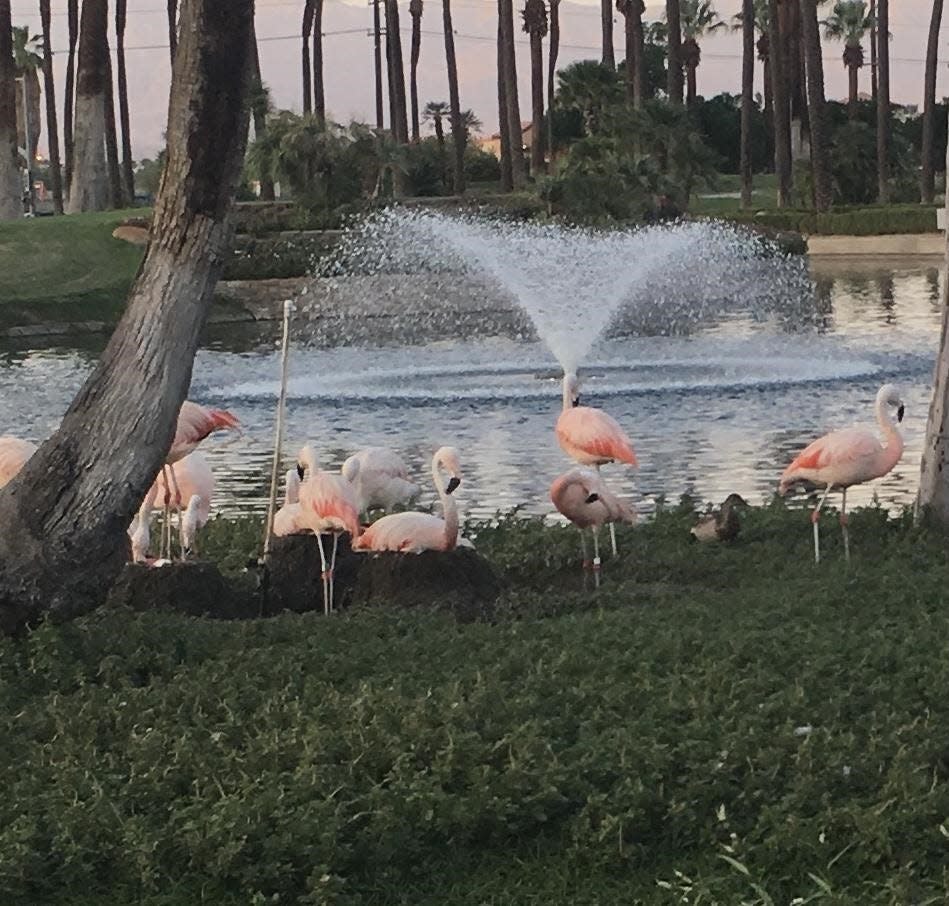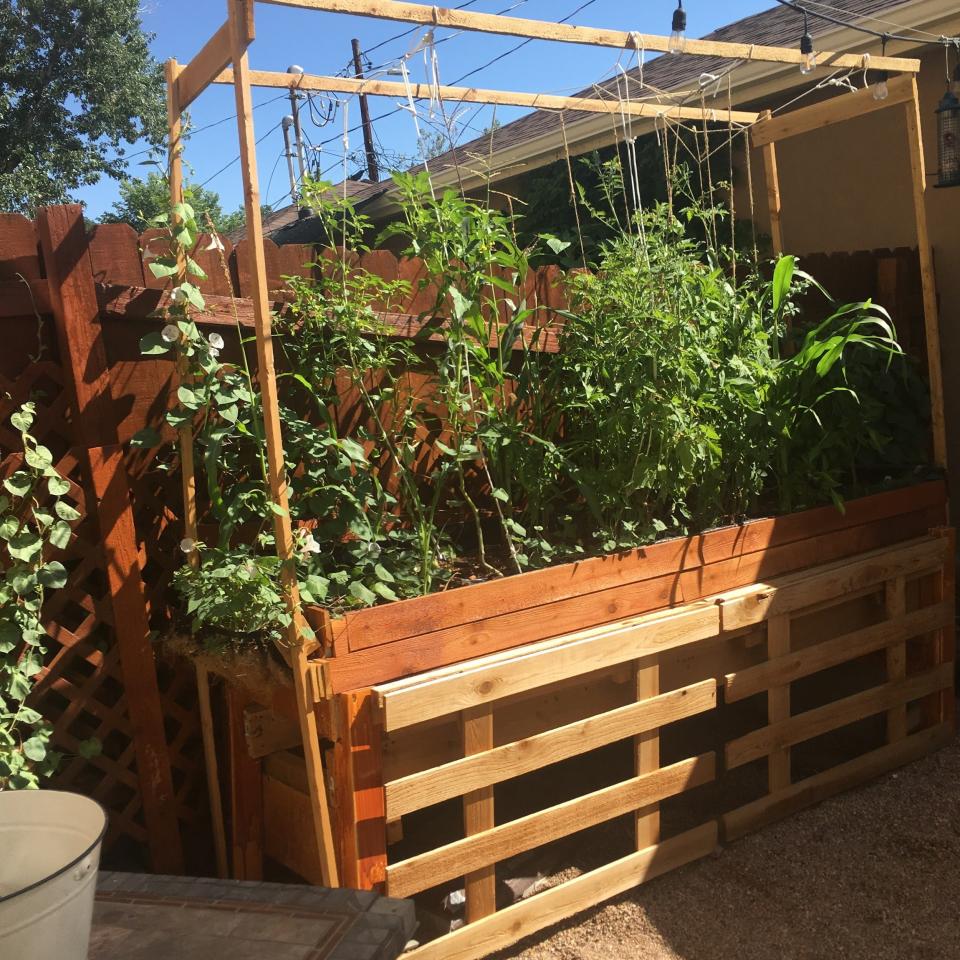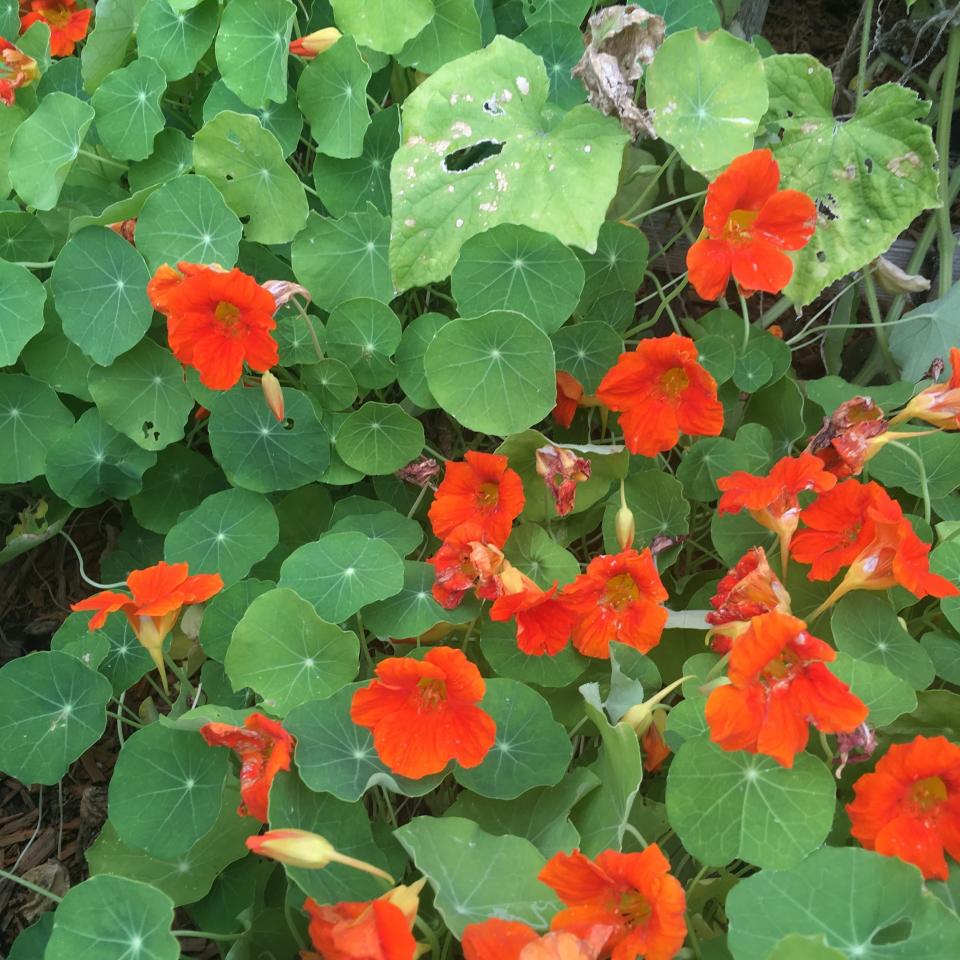Edible plants add color, texture, scent and flavor to your food

Tagging along with my daughter, Ann, to her conference in Palm Desert, Calif., last week was part of my vacation. The really, really hot part. “The surface of the sun” was what Ann called it.
Yet the grass was green, the golf course well watered. The Flamingos, pink of course, were not yard birds, but alive and swimming, fascinating to watch as they rested by standing on one foot. They do this to save energy.
From the desert, we flew back to mile-high Denver, where cooler dry air greeted us and we could check out her garden.
This spring Ann and her husband Dave built a raised bed garden and filled it with good black dirt, set up a watering system under the soil, and planted it with all their favorite things.
Sweet one hundred tomatoes were popping out as well as peppers, heirloom tomatoes, rosemary lavender and sweet basil. Corn is growing and it is forming ears of multi-colored kernels.

A first-time experiment was planting tomatillos. They are very green, small, round and covered with a lighter green almost gauzy husk, which is called a calyx. They are ready when the fruit inside has grown large enough to burst the calyx. Cut up and blend in salsa and other dishes if you like spicy hot.
I don't usually give out recipes, but try some basil leaves, well washed, add small tomatoes, and cut up pieces of morozello cheese. Sprinkle some balsamic dressing over it, salt and pepper and it is a great substitute for a lettuce salad.
Speaking of eating, it’s time to think about edible flowers. They are a good way to add color, texture, even scent, and a different flavor to your food.
Daylilies are great to experiment with if you haven’t tried eating flowers before. The blossoms are sweet, orange, and yellow the sweetest. Use them like lettuce and tuck them in a sandwich or garnish salads with bright colors. Float them in the punch or as an appetizer, stuff them with soft cheeses, and just smile when your guests ask what this tasty treat is.
Nasturtiums are another popular edible flower. It is easy to sneak them into a salad and enjoy the peppery zest they add to it. Substitute blossoms for mustard on a sandwich.

How about nasturtium pesto? My seatmate on the flight to Denver was Pastor Andrew Bee from Lisbon, Iowa’s Uncommon Church. Our conversation finally led to gardening. He and his wife have had a bountiful first garden in Iowa and she emailed to me this recipe for nasturtium pesto.
Pick the healthiest leaves and flowers and wash them very thoroughly and let them dry.
It calls for 4 cups packed nasturtium leaves and 2 cups packed nasturtium flowers, 1 1/2 cups olive oil, 5 cloves garlic, 1 to 1 1/2 cups walnuts, 1 to 1 1/2 cups shredded Parmesan cheese.
Mix well in a blender or food processor and pour into jars and refrigerate.
It makes about 2 cups. Something fun to surprise your friends and family with and full of good vitamins.
There are many, many edible flowers. Do as the Romans did and try roses, violets, and borage.
Roses and violets add color to salads and both are good for making jelly. Violets have a sweet, wintergreen-like flavor. Next spring when the small wild violets dot your lawn, I have a recipe for jelly that is a beautiful lavender color.
Borage is a very old plant that grows tall with blue, star-shaped flowers. It has a cucumber taste. Use as garnish or float in the punch with blossoms frozen in ice cubes.
Chamomile is popular for tea as is Bee Balm. Chives bloom in the spring with beautiful purple flowers which have a mild onion flavor, great for casseroles, eggs, and cooked vegetables. Even lilacs can be added to vanilla yogurt for a sweet, floral flavor. And inpatients, believe it or not, can be tossed with salads or floated in drinks.
So much to harvest in the garden. Helps make the weeding a lot more fun, doesn’t it?
This article originally appeared on Iowa City Press-Citizen: Edible plants add color, texture, scent and flavor to your food

